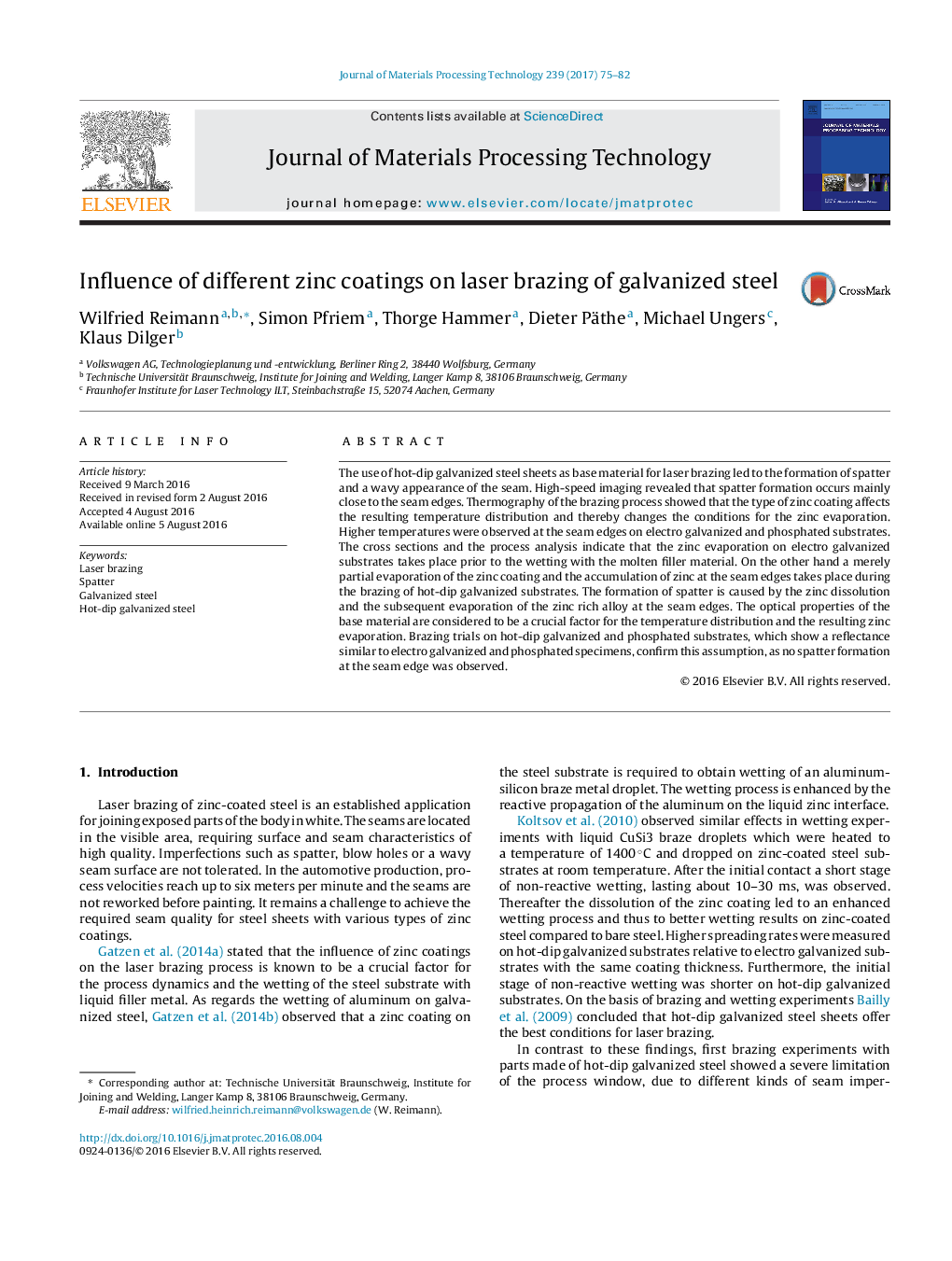| Article ID | Journal | Published Year | Pages | File Type |
|---|---|---|---|---|
| 792815 | Journal of Materials Processing Technology | 2017 | 8 Pages |
The use of hot-dip galvanized steel sheets as base material for laser brazing led to the formation of spatter and a wavy appearance of the seam. High-speed imaging revealed that spatter formation occurs mainly close to the seam edges. Thermography of the brazing process showed that the type of zinc coating affects the resulting temperature distribution and thereby changes the conditions for the zinc evaporation. Higher temperatures were observed at the seam edges on electro galvanized and phosphated substrates. The cross sections and the process analysis indicate that the zinc evaporation on electro galvanized substrates takes place prior to the wetting with the molten filler material. On the other hand a merely partial evaporation of the zinc coating and the accumulation of zinc at the seam edges takes place during the brazing of hot-dip galvanized substrates. The formation of spatter is caused by the zinc dissolution and the subsequent evaporation of the zinc rich alloy at the seam edges. The optical properties of the base material are considered to be a crucial factor for the temperature distribution and the resulting zinc evaporation. Brazing trials on hot-dip galvanized and phosphated substrates, which show a reflectance similar to electro galvanized and phosphated specimens, confirm this assumption, as no spatter formation at the seam edge was observed.
